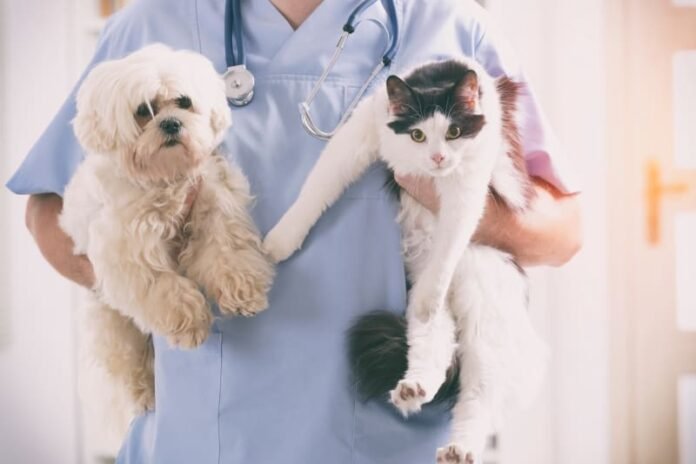Some signs that a pet may need emergency vet care are trouble breathing, excessive bleeding, signs of pain or distress, sudden collapse or loss of consciousness, severe vomiting or diarrhea, and changes in behavior like being tired or confused.
If your pet is showing any of these symptoms, it is important to seek medical attention as soon as possible. Also, it is an emergency if your pet has eaten something poisonous, is suffering from heat stroke, or has been hurt in an accident.
Contents
How to Know When Your Cat or Dog Needs Help
Cats and dogs can have emergencies that need immediate care anytime, day, day, or night, so you need to be ready.
It’s not always easy to know if your pet needs emergency care, so you’ll need to know some of the signs and symptoms that mean taking your pet to the emergency vet. Call your vet or an emergency vet clinic if you’re unsure what to do.
Signs Your Pet Needs Emergency Vet Care
- Severe injury (falls, car accidents, broken bones, open wounds)
- Bloated, swollen, or painful abdomen
- Dilated pupils
- Vomiting or blood in diarrhea
- Uncontrolled bleeding
- Seizures
- Lameness or inability to walk
- Unconsciousness
- Obvious pain
- Inability to urinate or defecate
- Difficulty breathing, extreme coughing or choking
- Sudden blindness, staggering, or stumbling
- Loss of balance
- Inflammation or injury to the eye
- Ingestion of poisonous foods, substances, plants, or bones
- Unable to deliver puppies or kittens
First Aid Basics For Pets
Remember that giving your pet first aid isn’t meant to replace veterinary care. It’s only meant to keep your pet stable until you can get it to the vet or an emergency clinic.
Bleeding
Start by giving your pet a muzzle. Put a clean gauze pad on the wound and press on it with your hand until the blood starts to clot. For severe leg bleeding, a gauze tourniquet and an elastic band are needed to stop the bleeding. Take your cat or dog to the vet right away.
Seizures
Take away anything that your pet could hurt. Don’t try to hold them back. After the seizure, keep your animal warm and call your vet.
Fractures
Muzzle your pet. Place your cat or dog on a flat surface that can be used as a stretcher to take them to the vet. If you can, tie them to the stretcher without touching the injured area.
Read More: 5 Things We Learned About Pet Care In 2023
Choking
Be careful. Your pet might bite if it gets scared. Check to see if they have anything in their mouth and try to get it out if you can, but be careful not to push it further down their throat. If this is hard, don’t waste time on it because you could be wasting valuable time. Take your pet to the vet as soon as possible.
Being Ready
What you need to know ahead of time
Our emergency vets say that in case of a veterinary emergency, you should be ready with the following:
- The contact information for your primary care veterinarian’s office
- The phone number for the closest Emergency Vet Clinic
- Directions to the Emergency Vet Clinic
- How to muzzle your dog when they are in pain so they don’t bite others
- Knowledge of how to stop bleeding
- The steps for performing basic CPR for pets
- The phone number for the Animal Poison Control Center
Your Financial Obligations
Due to the number of tests, checks, and treatments needed, emergency care for cats and dogs can be expensive. As a pet owner, you must ensure you have enough money to take care of your pet if something goes wrong.
Putting money aside for emergencies or getting pet insurance may make it easier to plan for things you can’t predict. When getting a pet, it’s essential to keep this in mind. Putting off care, so you don’t have to pay emergency fees could risk your pet’s life.
Read More: Winterize Your Pet




















